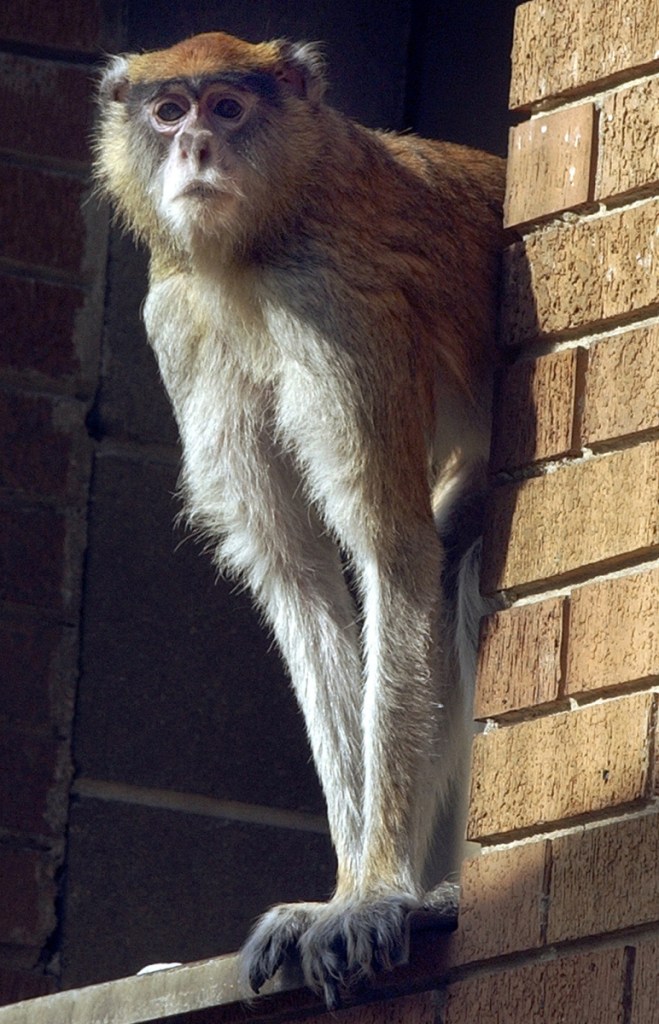CONCORD, N.H. — The furry orange protagonist of “The Lorax” and the Truffula trees for which he spoke may have been inspired by specific monkeys and trees in Kenya, according to researchers at Dr. Seuss’ alma mater, Dartmouth College.
The 1971 book pits a short, mustachioed “sort of man” who “speaks for the trees” against the Once-ler, a greedy industrialist harvesting the trees into near extinction. Published just after the birth of the modern environmental movement in the United States, the story has won praise for promoting the conservation of natural resources and condemnation from the logging industry.
Some have speculated that Seuss was inspired by cypress trees near his California home. But anthropology professor Nathaniel Dominy suggests the whistling thorn acacia commonly found in Kenya makes more sense, given that Seuss wrote much of the book while visiting a safari club there.
The region also is home to the patas monkey, which, like the Lorax, has orange fur and stands on two feet. And in a paper published Monday, Dominy and his co-authors argue their theory could challenge some traditional interpretations of the text.
The Lorax has been described as an “eco-policeman asserting his authority,” they write. But viewing him as a patas monkey might change that perception given that the species relies on the whistling thorn acacia trees for more than 80 percent of its diet.
“A lot of people criticize the Lorax and say he’s too angry, he’s too upset, that his rhetoric is problematic and that it’s not the way environmentalists should be engaging with policy makers or polluting industries,” Dominy said in an interview last week. “Our argument is, no, if the Lorax is based on a living animal that has this tight, co-evolved relationship with a tree, then it’s better to think of the Lorax not some indignant steward of the environment but as a participating member of the environment. And then this anger is so much more understandable.”
Joe Fassler, a journalist who once called the Lorax a “bossy, pedantic guilt-tripper” in an article for The Atlantic, said Thursday he imagined the Lorax as neither human nor animal, perhaps a “forest spirit” serving as an outside arbiter.
The new interpretation makes the character much more vulnerable, he said.
“If it was Seuss’s intention to do that, it’s very cool that he left it subtle and not explicit,” he said.
For years, Dominy had seen patas monkeys on his own trips to Kenya and remarked to others that they looked like something Seuss would create. But he didn’t start researching a possible connection to the Lorax until he started reading the book to his children and struck up a conversation Donald Pease, an English professor at Dartmouth and author of a Seuss biography.
They performed a computer-generated analysis to confirm that the Lorax’s face looks more like a patas monkey than most similar-looking Seussian characters.
The paper published Monday in the journal Nature Ecology & Evolution notes that the geographic range of patas monkeys has collapsed in recent decades, in part because demand for the charcoal produced by the their trees has grown.
“Such findings suggest that we are witnessing a prophetic example of life imitating art imitating life,” the group wrote, then harkened to the end of the book: “That is, UNLESS …”
Send questions/comments to the editors.



Success. Please wait for the page to reload. If the page does not reload within 5 seconds, please refresh the page.
Enter your email and password to access comments.
Hi, to comment on stories you must . This profile is in addition to your subscription and website login.
Already have a commenting profile? .
Invalid username/password.
Please check your email to confirm and complete your registration.
Only subscribers are eligible to post comments. Please subscribe or login first for digital access. Here’s why.
Use the form below to reset your password. When you've submitted your account email, we will send an email with a reset code.